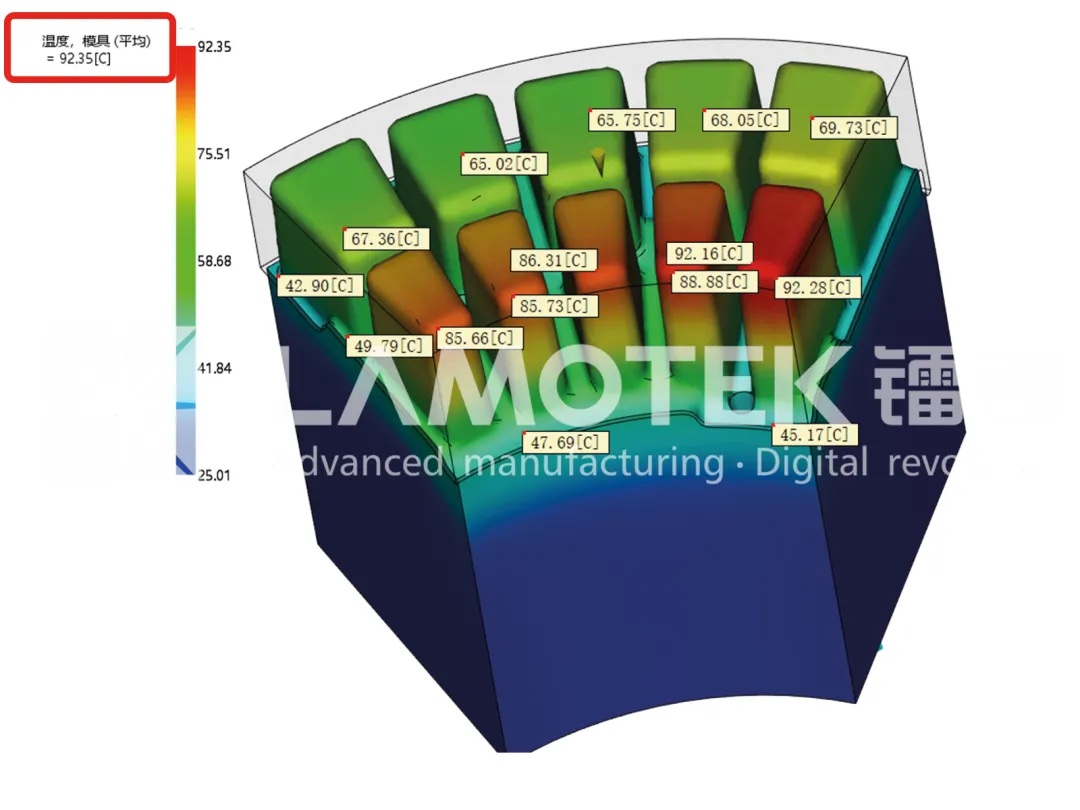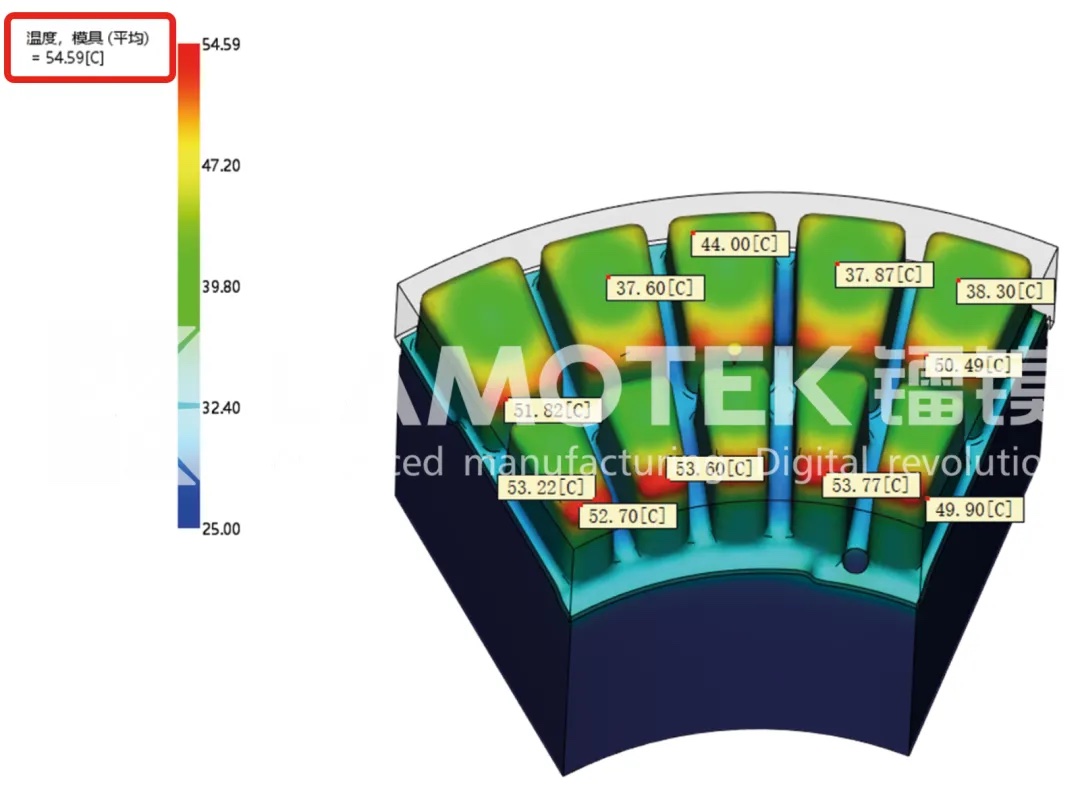LAMOTEK Insights | Optimizing the Injection Molding Process — 3D Printing and Moldflow Analysis Empower Cooling Channel Design
Traditional mold cooling channels are usually drilled by milling machines, resulting in a relatively simple design that can only follow straight vertical paths. In complex mold structures, traditional cooling channels are unable to conform to the surface of the mold cavity, leading to inefficient cooling, extended injection cycles, and even affecting the surface quality of the injected products.
In contrast, 3D printing technology can create cooling channels that fully conform to the surface of the mold cavity, allowing precise temperature control of the mold. This significantly shortens the injection cycle and improves product yield.
2. The Role of Moldflow Analysis in Cooling Channel DesignMoldflow analysis is a simulation method that uses software to model the injection process. Based on principles of fluid dynamics and thermodynamics, it solves the problem under set boundary conditions and presents a visual representation of the entire injection process. Moldflow software is one of the earliest tools used for injection molding simulation. After more than 40 years of development, it can now accurately predict the feasibility of mold designs and optimize mold structures.
With Moldflow analysis, various key stages of the injection process can be thoroughly analyzed, including determining the optimal gate location, predicting potential warpage, and simulating and analyzing air trap issues. These analysis results help identify and resolve potential problems in mold design and provide a reliable basis for optimizing cooling channel structures. By continuously adjusting and refining the design, we can gradually arrive at the best solution. This approach allows us to improve the mold design before actual part production, saving both time and cost while improving product quality and production efficiency.
Using Moldflow analysis enables quick identification of the causes of injection defects and mold design shortcomings. It helps determine the optimal design for 3D-printed inserts, solving injection issues quickly and achieving a “first-time-right” effect, avoiding trial and error that could lead to unnecessary changes and cost overruns. As an industry-leading provider of 3D-printed mold solutions, LAMOTEK recognized the value of computer simulation for 3D-printed molds early on and has built a strong capability in Moldflow simulation hardware and software. With a deep understanding of both 3D printing and mold simulation, LAMOTEK provides users with a precise and intuitive “simulation and manufacturing integration” solution, ensuring the performance of 3D printing is “clear, visible, and valuable.”
3. LAMOTEK’s Moldflow Analysis Case StudyComponent Name: A unit from the mold of a washing machine drum rotor
Plans:
a. Traditional steel mold cooling channels
b. Beryllium copper cooling channels
c. LAMOTEK’s 3D-printed conformal cooling channels
Process: Under consistent conditions—such as melt temperature, ambient temperature, cooling water temperature, and mold opening time—the temperature changes on the mold surface and inside the cooling channels were compared over time.
Results:
 Plan a: Traditional steel mold cooling channels
Plan a: Traditional steel mold cooling channels
 Plan b: Beryllium copper cooling channels
Plan b: Beryllium copper cooling channels
 Plan c: LAMOTEK’s 3D-printed conformal cooling channels
Plan c: LAMOTEK’s 3D-printed conformal cooling channels
By comparing the temperature differences across the three plans, we can clearly see the variance in cooling performance: LAMOTEK’s 3D-printed conformal cooling channels had the best cooling effect, followed by beryllium copper, while the traditional steel straight-through channels performed the worst. With LAMOTEK’s 3D-printed conformal cooling solution, the mold surface temperature was reduced significantly from 170°C in the traditional plan to 55°C, greatly improving cooling efficiency and shortening the injection cycle. Notably, the performance of LAMOTEK’s 3D-printed conformal cooling channels rivals and even surpasses beryllium copper, with the insert’s lifespan far exceeding that of beryllium copper. Considering cost, durability, and cooling efficiency, 3D-printed conformal cooling inserts offer a better cost-performance ratio than beryllium copper inserts.
4. LAMOTEK’s Services
As a digital 3D printing solutions provider,LAMOTEK offers comprehensive digital simulation services to its customers. In the mold industry, LAMOTEK has delivered over 100,000 mold sets to clients, accumulating a wealth of design data and a standards library, enabling the delivery of high-quality solutions in a short time.
While Moldflow is primarily used for injection molding simulation, we use appropriate simulation technologies for the die casting industry as well.
We welcome you to join us in exploring the future trends in mold manufacturing!